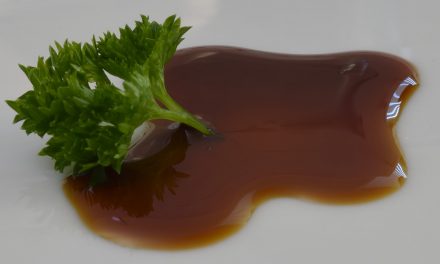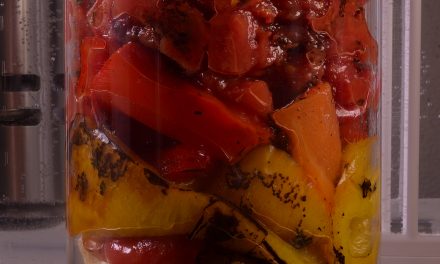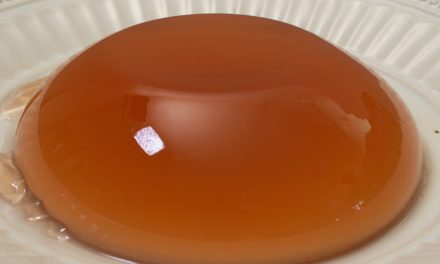Please don’t make me…
What can Sous Vide do for me?
Ingredients:
- 2 egg yolks, or, 1 egg (whole). that’s right. WHOLE.
- 1 stick of COLD butter. 4 oz, DO NOT MELT.
- 2 tablespoons lemon juice (don’t leave this out, it’s part of the chemistry)
- pinch of salt (you can adjust this later)
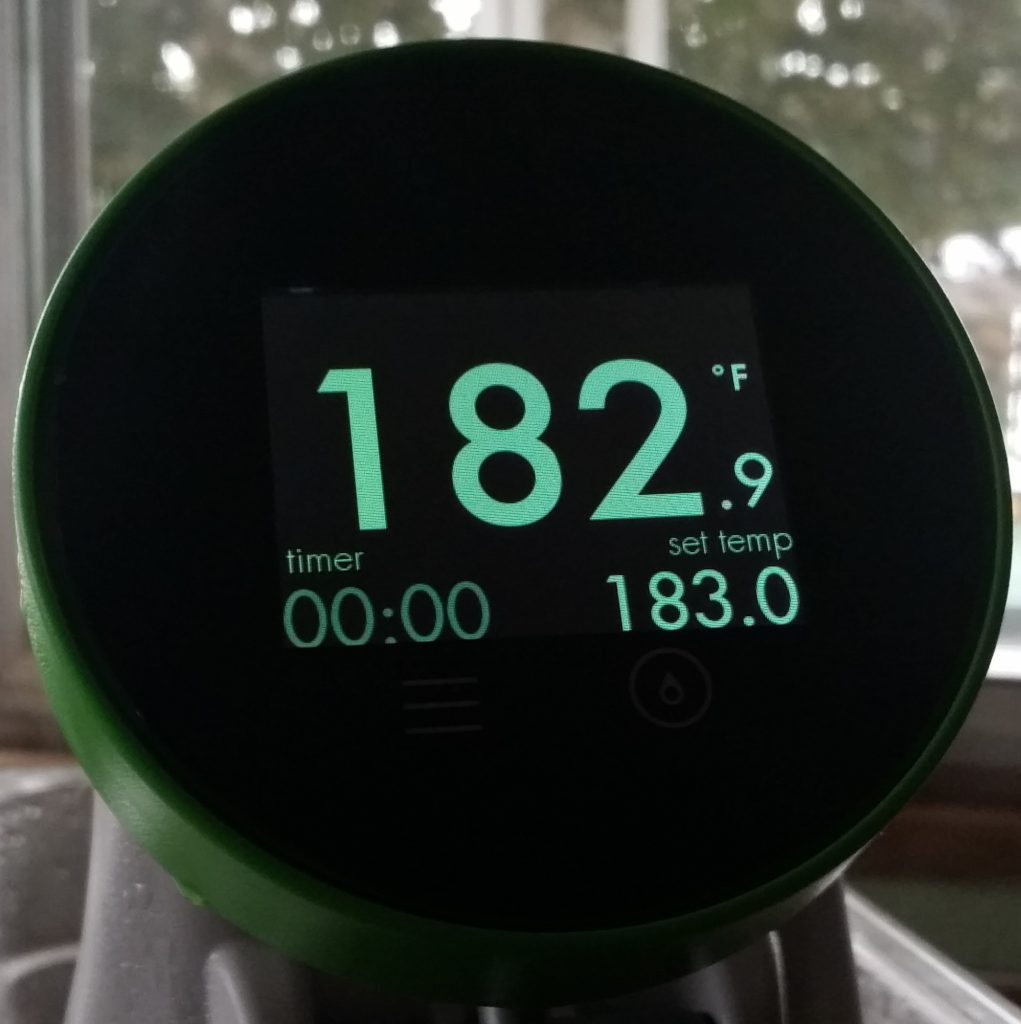
Procedure:
- Preheat your SV vessel to 183F. I’m using the Nomiku Immersion Circulator.
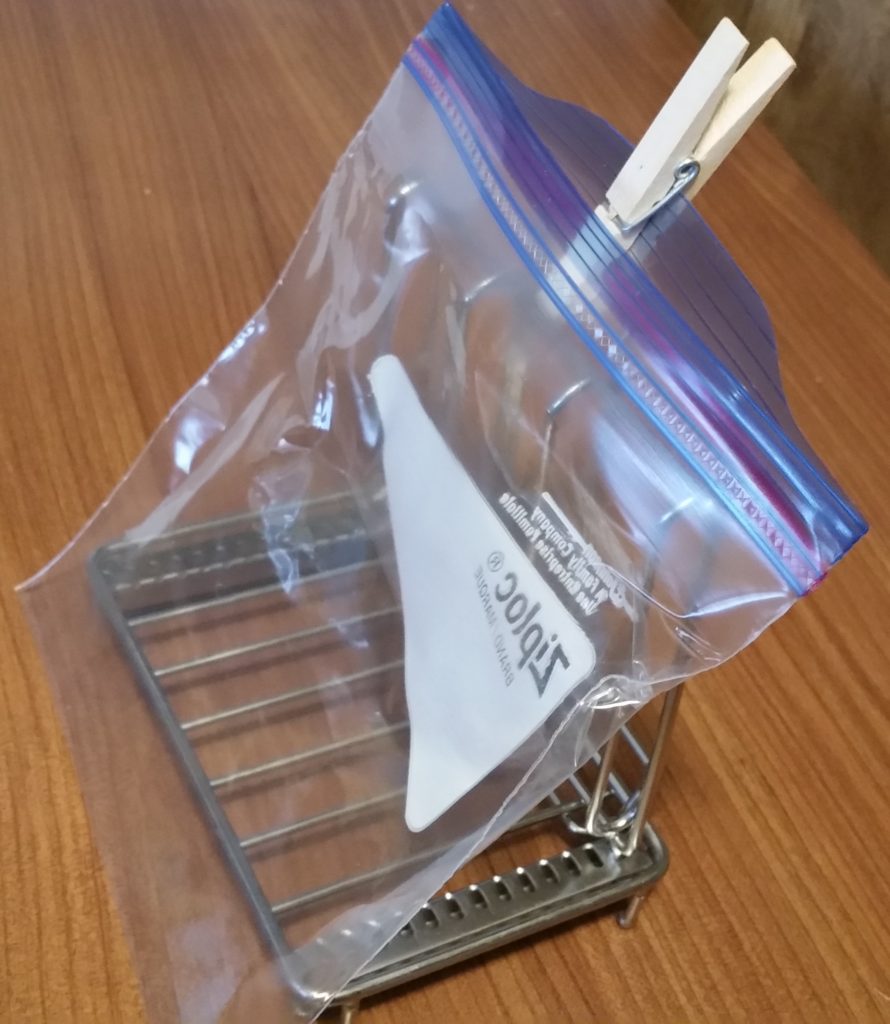
- I clip a Ziploc quart bag to my Lipavi rack…
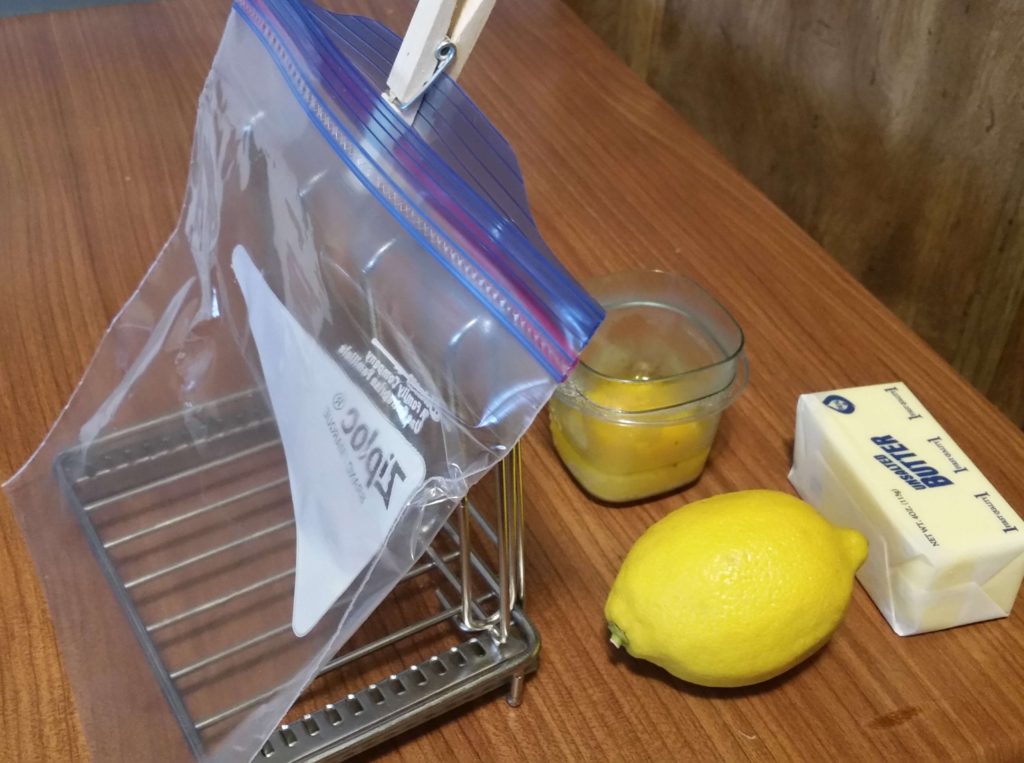
- 2 egg yolks (or one whole egg), one lemon, and the butter
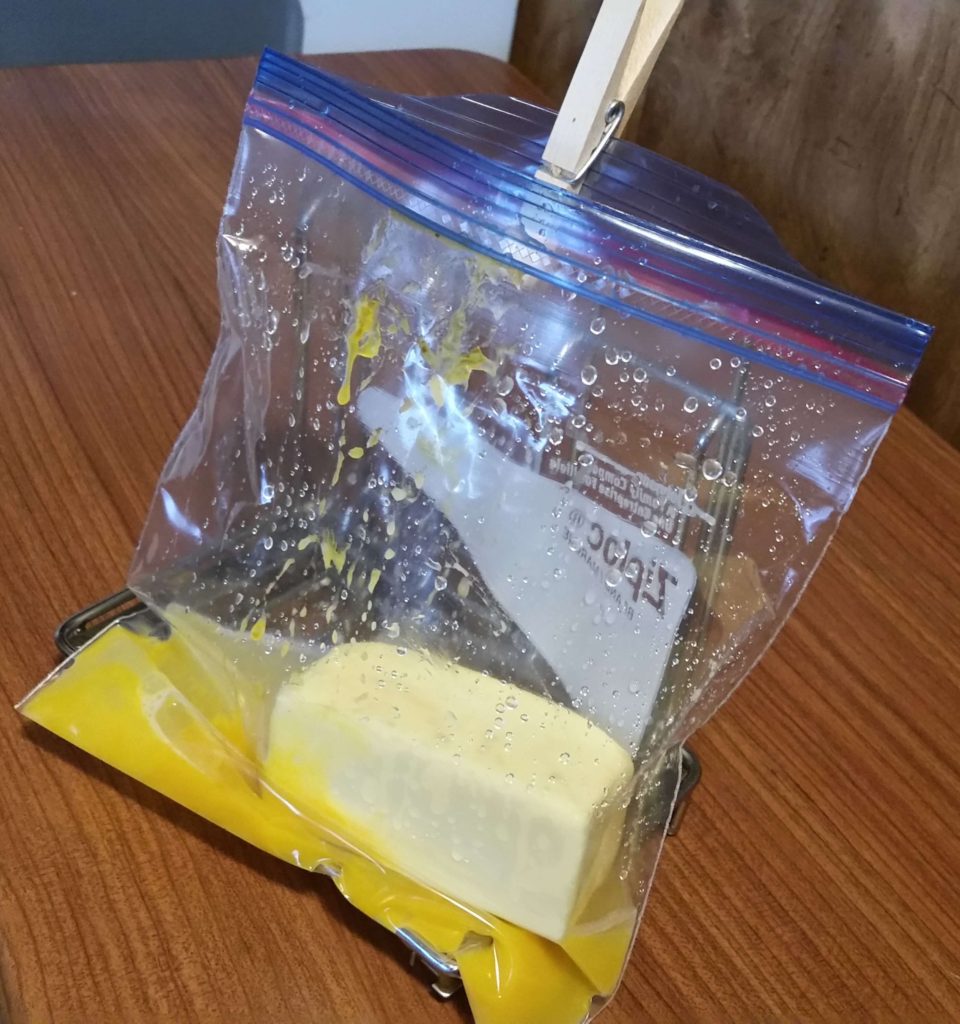
- Squeeze the lemon through a strainer, and everything goes into the bag cold.
- Add just a pinch of salt.
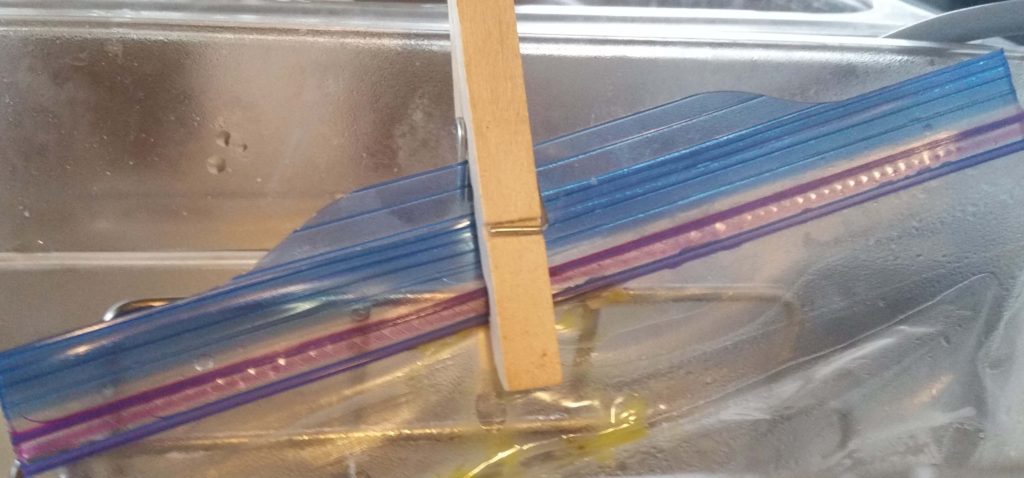
- Seal the bag, but, it’s really not necessary to remove all the air, in this case
- Put the bag in the tank for half an hour

- Remove, set on the counter and let it rest for a minute, so it’s easier to handle
- Dump the bag out into a narrow container, like a drink glass so that a stick blender just fits into the bottom.
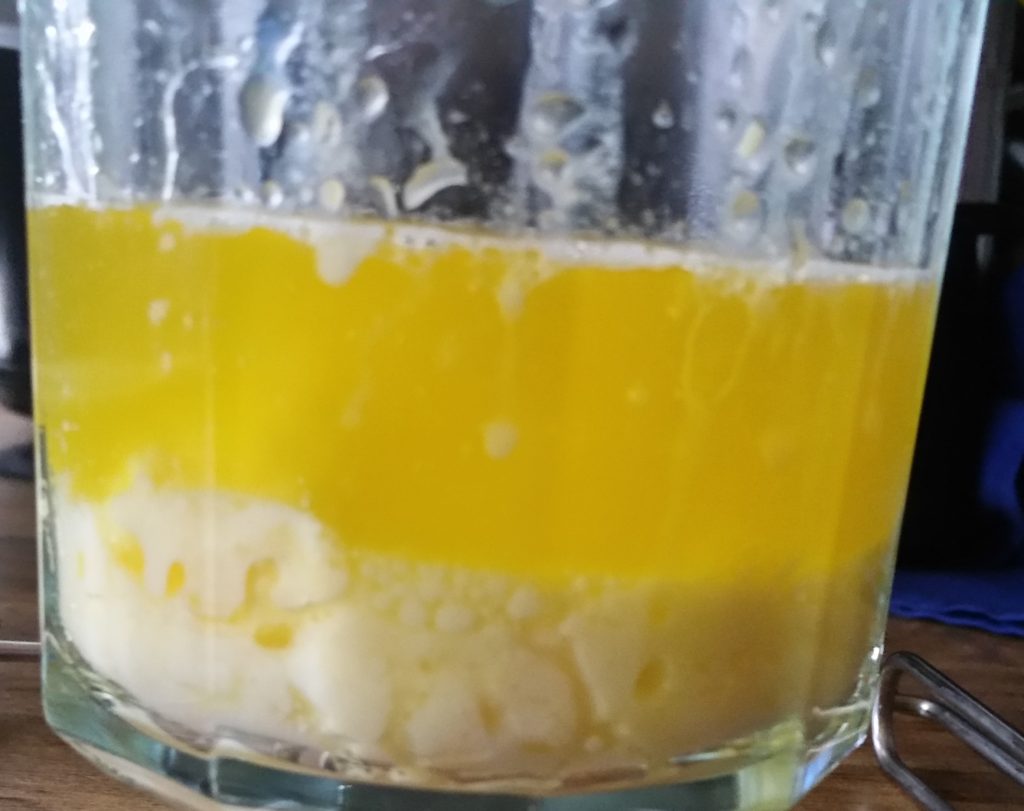
- You will see, the butter will be melted on top of what appears to be soft scrambled eggs. That’s what you want.
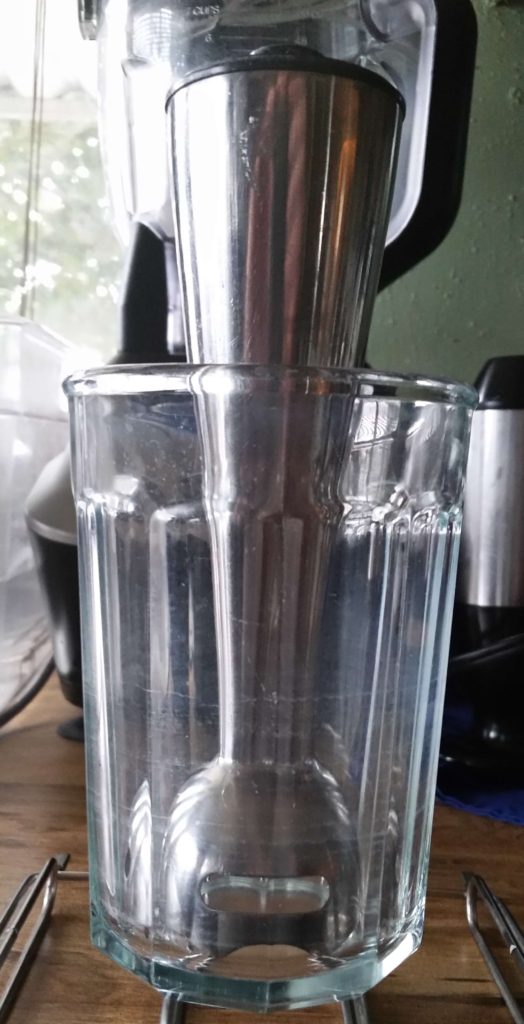
- PULSE, and watch, as the egg on the bottom slowly pulls the butter down into it. DON’T LIFT THE BLENDER UP. Keep pulsing, and then, TILT the blender a little bit to pull the remainder of the butter into the sauce.
Yes! We Have It – Sous Vide Hollandaise
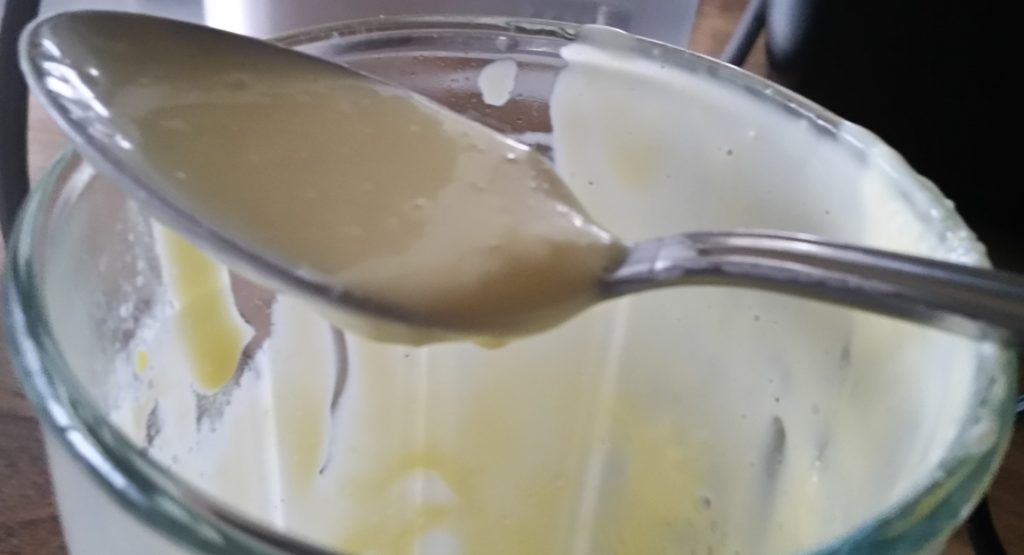
- If there’s still a little butter on top, you can stir it in with a spoon, and then taste it. It’s going to be hot–about 140F. Serve immediately, or you can keep it, it won’t break until it goes below 120F, although it may get somewhat thicker.
Trouble shooting:
We used to blame humidity, bad ventilation, eggs too old, eggs too fresh, womanhood, and anything else we could think of when this sauce failed. The fact is, anxiety makes this sauce fail as often as anything else might. But, there’s hope. If your sauce separates while you’re blending it, do not discard it. Set it aside, someplace warm, and, in a few minutes the butter will all float to the top, and everything else will settle to the bottom. add ONE TABLESPOON of hot water, and let it sink, and, then, process again, remembering always NOT to lift the stick blender up. Your result should be a very satisfying Sous Vide Hollandaise.

